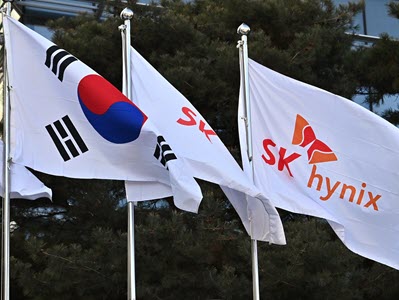The Role of South Korea in the U.S. Semiconductor Supply Chain Strategy
This commentary by Troy Stangarone is part of the roundtable “The Role of Allies in the U.S. Strategy for Semiconductor Supply Chains.”
With geostrategic competition increasing between the United States and China, Washington is increasingly taking steps to maintain a technological lead on China in strategically important areas such as semiconductors. To maintain this lead, the United States has turned to a combination of export controls to limit China’s access to the most advanced semiconductor technology and incentives through the CHIPS and Science Act to encourage investments in increased production domestically.
In order to successfully implement these policies, the United States will need the support of allied governments and foreign firms to enforce export controls abroad and invest in new semiconductor facilities in the United States. South Korea and South Korean firms are expected to be key partners for the United States in its efforts to strengthen U.S. supply chains, but they have concerns about the impact of U.S. export controls and the guardrails in the CHIPS Act on business operations and the future prospects for the semiconductor industry in South Korea.
Why South Korea Matters for the U.S. Semiconductor Supply Chain
South Korea plays an important role in global semiconductor supply chains. While Europe and Japan play crucial roles in the manufacture of equipment and chemicals needed for semiconductor production, South Korea is a key end producer of semiconductors, including some of the world’s most advanced chips. The two largest South Korean manufacturers—Samsung Electronics and SK Hynix—account for 17% of the global market share and are the dominant producers of memory chips globally. Based on data from 2022, Samsung Electronics and SK Hynix accounted for approximately 50% of global market share in NAND flash memory chips. In the DRAM segment, the two firms are even more dominant, accounting for nearly 70% of the global market.
South Korea also plays a key role as a manufacturer for fabless semiconductor firms, with an 18% market share.[1] Samsung Electronics is the world’s second-largest manufacturer, trailing only TSMC. South Korean firms are also technologically advanced. According to McKinsey, 37% of the world’s production capacity for semiconductors smaller than ten nanometers is in South Korea (the remainder is in Taiwan), giving it the ability to produce the world’s most advanced chips.
In addition, semiconductors are a key part of cooperation between the United States and South Korea. In 2021 the two countries agreed to cooperate on R&D and support investment in leading edge manufacturing in both countries. This included a commitment by Samsung Electronics to invest $17 billion to build a second semiconductor fabrication plant (or “fab”) in the United States. Subsequently, SK Hynix announced that it would invest $15 billion in an advanced chip packing plant and R&D facility in the United States. Samsung is also considering investing $200 billion in eleven additional U.S. plants.
On the governmental level, South Korea is a participant in the “Fab 4” East Asian semiconductor grouping. At last year’s summit meeting, the two countries agreed to establish the ministerial-level U.S.-Korea Supply Chain and Commercial Dialogue, where semiconductors are one of the issues discussed.
South Korean Concerns Regarding U.S. Semiconductor Policy
Despite South Korea’s commitment to working with the United States on semiconductors, the country has concerns about U.S. policy and its implications for the domestic semiconductor industry and South Korean firms’ operations more broadly. These firms are important for the domestic economy, which is highly dependent on trade. Exports account for 42% of GDP, and semiconductors are South Korea’s largest export item, accounting for nearly 18.9% of total exports in 2022.
South Korean firms have invested significantly in semiconductor production in China. Samsung’s plant in Xi’an produces 40% of its NAND chips, while half of SK Hynix’s DRAM chips and upward of 30% of its NAND chips are produced at its plants in Wuxi and Dalian. U.S. export controls put in place last year to prevent the shipment of advanced U.S. technology to China have raised concerns about the ability of Samsung and SK Hynix to run their Chinese facilities after an initial one-year waiver expires.
South Korea is also concerned about the conditions set by the U.S. Commerce Department for semiconductor firms to receive U.S. subsidies under the CHIPS Act. These include requirements that firms provide information about their management, profit projections, and technology; provisions over profit sharing; and restrictions for ten years on expanding operations in China. Although the guardrails recently announced by the Commerce Department have lessened concerns about South Korean operations in China, broader issues persist.
What South Korea Is Doing to Protect Its Semiconductor Industry
South Korea is taking steps to protect the long-term future of an industry critical for its own economy. The National Assembly recently passed its own version of the CHIPS Act. The K-CHIPS Act, as it is called, would provide a 15% tax break for facilities investment by large firms and up to 25% for small firms. It would also provide tax breaks of 30%–40% for R&D by large firms and up to 50% for small firms. It also reduces regulatory overlap between ministries.
The South Korean government has announced plans to create the world’s largest semiconductor cluster outside Seoul. $228 billion in investment through 2042 would come from Samsung, including the construction of five new fabs.
Alongside these domestic initiatives, Seoul is working through the Supply Chain and Commercial Dialogue and meeting with U.S. administration officials to discuss its concerns related to U.S. export controls and the CHIPS Act. Dialogue through these and other channels has helped South Korea ensure that its concerns are considered.
What Congress Can Do
There are steps that Congress can take to support South Korean semiconductor investments in the United States and cooperation on the semiconductor supply chain more broadly. First, it could pass the Partner with Korea Act. Congress has yet to follow through on providing South Korea with the professional visas that were agreed to with the Korea-U.S. Free Trade Agreement. With concerns about a shortage of qualified workers for semiconductor facilities, passage of the Partner with Korea Act will help ensure that Samsung and SK Hynix have access to skilled nonpermanent workers while Americans are being trained to take on more of the high-skilled jobs.
Congress should also hold hearings to review U.S. semiconductor strategy. Based on the concerns of South Korea and other U.S. allies and partners, Congress should seek to provide oversight on whether U.S. export controls are flexible enough to meet national security concerns without undermining the businesses of U.S. partners. In particular, it should examine whether the requirements for subsidies under the CHIPS Act could discourage investment in the United States.
Cooperation on semiconductors needs to support the industry in both the United States and South Korea. While DuPont invested in production of photoresist after Japan placed export restrictions on South Korea, there has been less attention to how U.S. investment in South Korea can support the broader supply chain between the two countries. This will be critical as they work together to protect the long-term viability of the industry. South Korea will be a key partner for strengthening the semiconductor supply chain in the United States, but long-term success requires developing a strategy that strengthens the supply chain in both countries.
Troy Stangarone is Senior Director and Fellow at the Korea Economic Institute (KEI), where he oversees trade- and economic-related initiatives, as well as KEI’s relations with Capitol Hill and the Washington, D.C., trade community. The views expressed here are the author’s.
Endnotes
[1] Fabless semiconductor firms are firms that design semiconductors but outsource their manufacturing to third-party firms.



